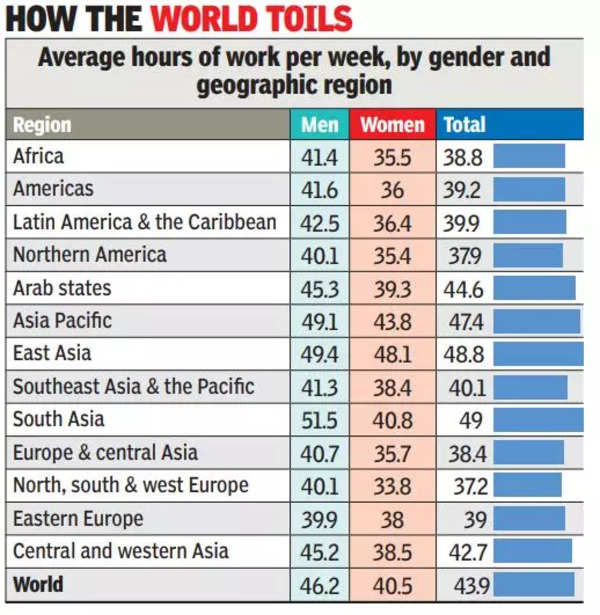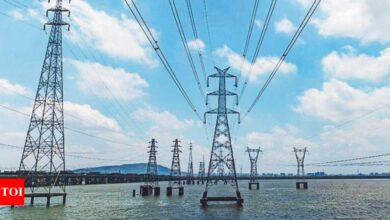Average work hours per week longest in South and East Asia: ILO | India News

[ad_1]
Globally, the sectors that had the longest weekly work hours in 2019 were wholesale and retail trade (49.1 hours), transport and communications (48.2 hours) and manufacturing (47.6 hours). Those with shortest weekly hours of work were agriculture (37.9 hours), education (39.3 hours) and health services (39.8 hours), though it seems likely that extreme demands on health services sector arising from Covid pandemic would have substantially increased average hours of work in that sector, as per the report.

The occupational group with longest average hours of work was plant and machine operators and assemblers, who worked 48.2 hours per week on an average, followed by service and sales workers at 47.0 hours per week. In contrast, both professionals and workers in elementary occupations, including skilled agricultural workers, worked an average of 40.2 hours per week. The report said reduced working hours and more flexible working time arrangements, like those used during Covid crisis, can benefit economies, enterprises and workers, and lay the ground for a better and more healthy work-life balance.
Work Life Balance
The ILO study based on data collected from 160 countries — it’s the first one conducted by the Organisation that focuses on work-life balance — found that a substantial portion of global workforce are working either long or short hours when compared to a standard eight-hour day/40 hour working week. More than one-third of all workers was regularly putting in over 48 hours per week, while a fifth of the global workforce was working short (part-time) hours of less than 35 per week. Informal economy workers were more likely to have long or short hours, said the report.
The report looked at two main aspects of working time: working hours and working time arrangements, and the effects of both on business performance and workers’ worklife balance. It includes a range of new statistics covering hours of work, both before and during Covid crisis. The study also looked at the crisis response measures governments and businesses used during pandemic to help keep organisations functioning and workers employed. It found that increased proportion of workers on reduced hours helped to prevent job losses.
Long-term changes are also highlighted. “The large-scale implementation of telework nearly everywhere in the world that it was feasible to do so, changed…the nature of employment, most likely for foreseeable future,” as per report. The Covid crisis measures also yielded powerful new evidence that giving workers more flexibility in how, where and when they work can be positive both for them and for business, for example by improving productivity. Conversely, restricting flexibility brings substantial costs, including increased staff turnover, as per the report. “There is a substantial amount of evidence that work-–life balance policies provide significant benefits to enterprises, supporting the argument that such policies are a ‘win-win’ for both employers and employees,” it says.
“The so-called ‘Great Resignation’ phenomenon has placed work-life balance at the forefront of social and labour market issues in post-pandemic world,” said Jon Messenger, lead author of the report. “This reportshows if we apply some of the lessons of Covid crisis and look carefully at the way working hours are structured, and their overall length, we can create a win-win, improving both business performance and work-life balance,” he said.
#Average #work #hours #week #longest #South #East #Asia #ILO #India #News




